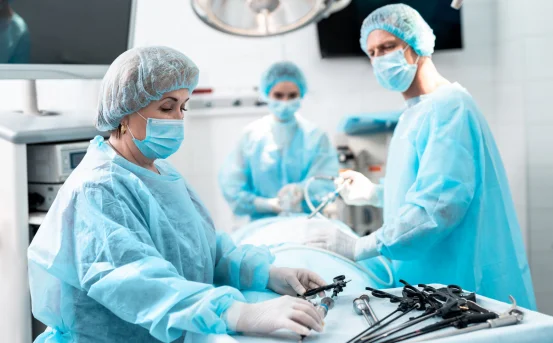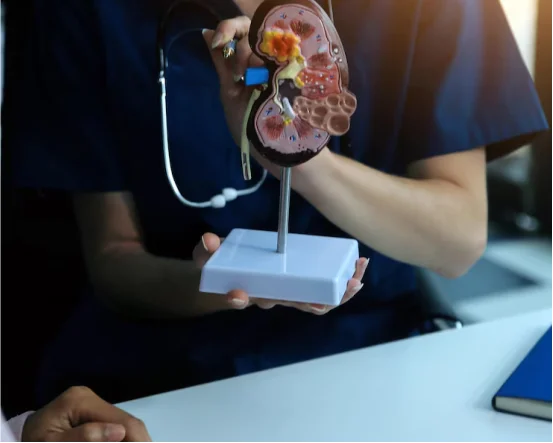Types of Cholecystectomy Surgery Cholecystectomy, the surgical removal of the gallbladder, is one of the most commonly performed abdominal procedures worldwide. This surgery is most often recommended when a patient experiences gallstones, gallbladder inflammation, or other gallbladder-related issues that cannot be resolved with medication or dietary changes. The gallbladder, while helpful in storing bile that aids in fat digestion, is not essential for survival. Its removal typically leads to improved health and quality of life when disease is present.
With the advancement of medical technology, multiple surgical techniques have been developed for gallbladder removal. The choice of technique depends on factors such as the severity of the disease, the patient’s anatomy, overall health, and the surgeon’s expertise. Understanding the types of cholecystectomy surgery can help patients make informed decisions and prepare for the procedure effectively. This includes knowing the different types of cholecystectomy surgery available, which can vary based on individual needs.
Understanding Types of Cholecystectomy Surgery
Cholecystectomy is a surgical procedure aimed at removing the gallbladder. It is performed to treat conditions such as:
- Gallstones (cholelithiasis)
- Gallbladder inflammation (cholecystitis)
- Biliary colic (pain from blocked bile flow)
- Gallbladder polyps
- Pancreatitis caused by gallstones
Gallstones are by far the most common reason for this surgery. They can block the flow of bile, cause pain, infection, and in some cases, lead to complications like jaundice or pancreatitis.
Surgery becomes necessary when symptoms persist or complications arise. Today, cholecystectomy is generally safe, effective, and offers long-term relief from gallbladder-related issues.
Types of Cholecystectomy Surgery
There are four main types of cholecystectomy procedures. Each approach is selected based on the patient’s condition, the urgency of the surgery, and technical factors.
Laparoscopic Cholecystectomy (Minimally Invasive Surgery)
Laparoscopic cholecystectomy is the most widely used method for gallbladder removal today. Often referred to as “keyhole surgery,” this technique involves making several small incisions in the abdomen through which a laparoscope (a small camera) and specialized surgical tools are inserted.
Procedure Overview:
- The abdomen is inflated with carbon dioxide gas to create space.
- A camera provides real-time images on a monitor, guiding the surgeon.
- The gallbladder is detached from the liver and bile duct, then removed through one of the small incisions.
- The incisions are closed with sutures or surgical glue.
Advantages:
- Less postoperative pain
- Smaller scars
- Shorter hospital stay (often same-day discharge)
- Quicker return to daily activities
- Lower risk of infection
This method is suitable for most patients with uncomplicated gallbladder disease. However, if complications arise or visibility is poor, the procedure may be converted to open surgery.
Open Cholecystectomy
Open cholecystectomy is the traditional method of removing the gallbladder. It involves a larger incision (usually 5 to 8 inches long) made in the upper right part of the abdomen to access and remove the gallbladder directly.
Procedure Overview:
- The surgeon makes a large incision under the rib cage.
- The gallbladder is carefully removed from the surrounding structures.
- Drains may be placed if there is infection or fluid accumulation.
- The incision is closed with sutures or staples.
When It’s Recommended:
- Severe gallbladder inflammation
- Scar tissue from previous abdominal surgeries
- Complicated cases (e.g., large stones, perforated gallbladder)
- Unclear anatomy or bleeding during laparoscopic surgery
Drawbacks:
- Longer recovery time (4 to 6 weeks)
- Larger surgical scar
- Increased hospital stay (typically 2 to 5 days)
Open cholecystectomy is now reserved for cases where laparoscopic surgery is not feasible or safe.
Single-Incision Laparoscopic Surgery (SILS)
Single-incision laparoscopic surgery is a newer, less commonly used technique that involves removing the gallbladder through a single small incision, usually made in the navel (belly button). This cosmetic-focused approach offers the advantage of a hidden scar.
Procedure Overview:
- One incision is made in the umbilicus.
- A specialized port system is used to insert a camera and instruments.
- The gallbladder is detached and removed through the same incision.
Advantages:
- Virtually scar-free appearance
- Less postoperative pain
- Faster cosmetic recovery
Limitations:
- Technically challenging for the surgeon
- Limited instrument movement
- Not suitable for patients with obesity, severe inflammation, or complex anatomy
While SILS offers aesthetic benefits, it is not widely available and requires experienced surgeons.
Robot-Assisted Laparoscopic Cholecystectomy
Robotic-assisted surgery is an advanced form of minimally invasive surgery. It uses robotic arms controlled by a surgeon from a console to perform delicate maneuvers with enhanced precision.
Procedure Overview:
- Similar to laparoscopic surgery in terms of incisions.
- The robotic system provides 3D visualization and improved dexterity.
- Surgeon uses hand and foot controls to operate robotic instruments.
Benefits:
- Improved precision
- Reduced risk of complications in complex cases
- Enhanced ergonomics for the surgeon
Considerations:
- Limited availability
- Higher cost
- Longer operation time in some cases
This method is often used in specialized centers or academic hospitals and may be preferred in cases involving difficult anatomy or revision surgeries.
Choosing the Right Type of Surgery
The choice of cholecystectomy method depends on several factors:
- Severity of symptoms :- Acute infection or perforation may require open surgery.
- Patient’s medical history :- Previous surgeries or health conditions can affect surgical planning.
- Surgeon’s expertise :- Availability of technology and experience may dictate the choice.
- Urgency of surgery :- Emergency cases often require the quickest and safest approach available.
Laparoscopic cholecystectomy remains the first choice for most elective cases due to its safety and recovery benefits.
Recovery Expectations by Surgery Type
- Laparoscopic surgery :- Patients can usually return home the same day. Most resume normal activities within 1–2 weeks.
- Open surgery :- Hospitalization for a few days is common. Recovery may take 4–6 weeks.
- SILS and robotic surgery :- Recovery is generally similar to traditional laparoscopy but may offer a better cosmetic result.
All patients are advised to avoid heavy lifting, follow dietary modifications initially, and monitor for signs of infection or complications.
Risks Associated with All Types of Cholecystectomy
Regardless of the type, all surgical procedures carry some risk, including:
- Bleeding
- Infection
- Bile leakage
- Injury to nearby organs (bile ducts, intestines)
- Blood clots
- Adverse reaction to anesthesia
Proper surgical planning and postoperative care help reduce these risks significantly.
Conclusion
Cholecystectomy surgery is a highly effective and often necessary treatment for gallbladder-related disorders. Today’s medical advancements offer a range of surgical techniques—from minimally invasive laparoscopic and robotic-assisted procedures to traditional open surgery. Each method has its indications, advantages, and limitations.
Laparoscopic cholecystectomy remains the most commonly used technique due to its safety profile and fast recovery. However, in certain situations, open surgery or more advanced techniques may be the preferred approach.
Discussing your symptoms, medical history, and preferences with your surgeon can help determine the best surgical plan tailored to your condition. With the right approach, cholecystectomy can relieve pain, prevent complications, and restore a healthy digestive system.























